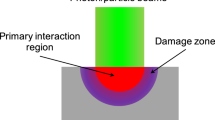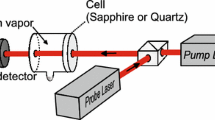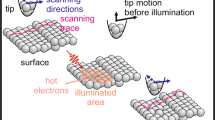Abstract.
Laser-induced surface damage introduces a dramatic change in the photoelectric properties of metallic and semiconductor substrates. Hence, by varying the applied laser intensity, ultra-short- pulsed laser-induced photoemission (in the mono- or multiphotonic regime according to the applied wavelength) can be used to monitor in situ surface structural changes. Results for a model system (thin diamond-like carbon (DLC) layer on an Si carrier) are presented, where, after ablation of the DLC layer, we observed a rapid increase in the photoelectric contribution from the underlying substrate. High-sensitivity measurements are presented for Au and W substrates where due to laser- induced damage within the escape depth of electrons and because of the apparition of ionized species upon ablation, the measured charge can indicate the onset of surface damage. Results are presented for various wavelengths (213 nm, 266 nm and 532 nm) and discussed in the light of previous results of threshold measurements obtained by optical methods.
Similar content being viewed by others
Author information
Authors and Affiliations
Additional information
Received: 21 July 1999 / Accepted: 15 September 1999 / Published online: 22 December 1999
Rights and permissions
About this article
Cite this article
Beleznai, C., Vouagner, D., Girardeau-Montaut, J. et al. Laser ablation threshold determination by photoelectric emission . Appl Phys A 69 (Suppl 1), S113–S116 (1999). https://doi.org/10.1007/s003399900324
Issue Date:
DOI: https://doi.org/10.1007/s003399900324




